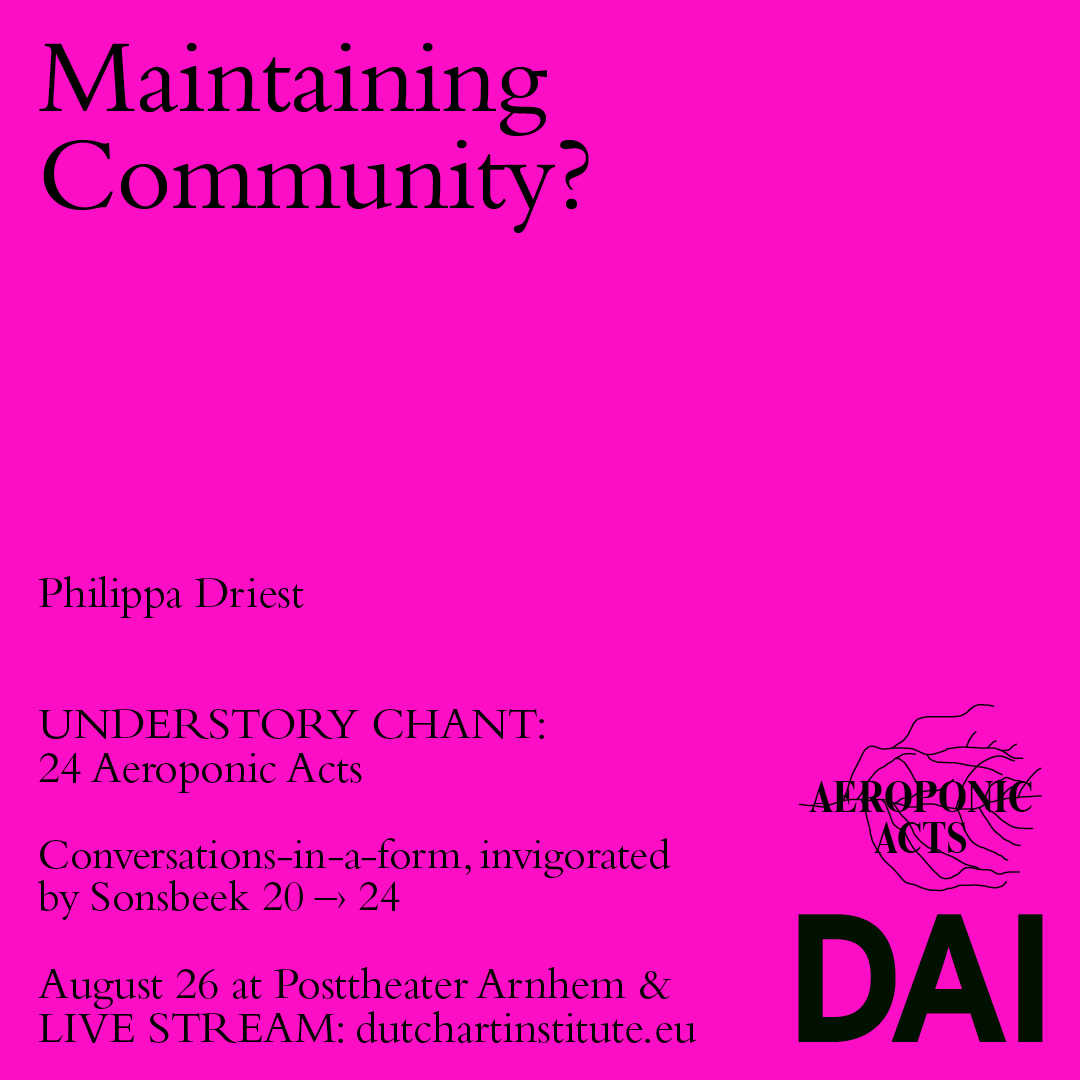Philippa Driest: Maintaining Community?
‘Aeroponic’ – root systems nourished by air – Acts is the name given to the nomadic Dutch Art Institute’s final Kitchen presentations. Each participant addresses one question, as a practice of engagement.
Here you will find the documentation of Clara Winter and Philippa Driest's presentation as filmed by Baha Görkem Yalım. The written report is by Harun Morisson and it includes a summary of the comments by esteemed guest respondents.
Maintaining Community?
Philippa's question: How to maintain community between the cracks and scuffles of the neo-liberal city?
Philippa's introduction: On housing and agency between the cracks and scaffolds of the neoliberal city. On the historical entanglement and occupation(s) of the "Poortgebouw" in Rotterdam. 'A Spectacle of so much glory and so much shame.’
Harun's report: On stage is a spotlit scale model of Poortebouw, a port side property built by a Dutch merchant with funds from colonial exploits. The property, until recently home to a community of squatters fighting eviction from developers, is presented as the protagonist of a narrative that spans its completion in 1879 to the present day.
A zine accompanying the presentation divides this narrative into key sections: Rotterdam, Pincoffs (a Rotterdam businessman), Squat, Scaffolds and Cracks.
A series of projected stills on stage as well as images in the zine enable the piece to function as an expanded photo-essay of sorts. We hear the testimony of squatters protesting against vagrancy laws, weaving questions of housing rights, maintenance, colonial legacies and the future cityscape of Rotterdam - into one story.
In a later moment three performers hold signs, or posters, that could be read as fragments of a script. Two ovals in the posters evoke eyes and make a face of a text. The texts seem to present themselves to each other. ‘Isn’t an architect more of an economist nowadays?’ Or, ‘Is an Economist the Architect?’ Multiple elements or building blocks are employed to convey this story, which speaks of both its socio-political ambition and slipperiness. The construction of counter-histories is as necessary as buildings themselves.
Barby Asante: This was very resonant for me. What struck me was the role of arts in relation to placemaking and maintaining community. I was born in Brixton. I've lived there all my life. I was working on a project there called Anchor and Magnet, we were aware how swiftly we were co-opted. The 1979 Squatters' Handbook published by the Advisory Service for Squatters with chapters on law, moving in and eviction features the Black, female activist Olive Morris on its cover. There’s often a contradictory erasure, but also nostalgia on the part of property developers in the narration of squatting. This often begins in the renaming of space: when developers start calling places ‘the point’, ‘the tower’, ‘the square’. Followed by the erasure of long-term residents. How does the narration of this kind of erasure utilise the necessary materials and strategies?
Momtaza Mehri: What constitutes a community and what’s the limits of the term? The word is thrown around so liberally. Quoting Maurice Blanchot in The Unavowable Community, how do we consider “the possibility or impossibility of community at a time when even the ability to understand community seems to have been lost.” I’m also thinking of artists as both drivers and victims of gentrification. Post-Post-Colonial literatures such Monica Ali’s Brick Lane or Zadie Smith’s White Teeth reveal this tortured relationship between valorizing a vibrant, scrappy, local community while contributing to its demise through contributing to the cultural scaffolding of gentrification. Artists are invested in the creative communities that cannibalise them. There is a celebration of squatting culture once there’s no life in it – but certain forces don’t want it to repeat itself. I would like to have heard more about what it means for you to live within that? Whenever I'm back in Kilburn, where I grew up, I’m more observant of gentrifying forces, which creep up slowly. Since when did we have police in the park? Or a French bakery?
Lisette Lagnado: Your presentation calls to my mind ‘How to Mend: Motherhood and Its Ghosts’ by Egyptian poet, Iman Mersal. . . This case is just one case. If you accept the idea of a crisis then you accept the idea or repair. So what happens if the notion of crisis is rejected in neoliberalism? What does it mean to look at the cracks? We must be together to destroy. Only through destroying what we have inhabited can we form . . .not another world, but another horizon. Imin Mersan strategies don't come from outside, they come from within. Can we work to look at problems from the inside out?
Philippa Driest's "Maintaining Community?" was presented before live audience at the Posttheater in Arnhem on August 26th.
Find the overview of all 24 AEROPONIC ACTS 2021 here: UNDERSTORY CHANT

